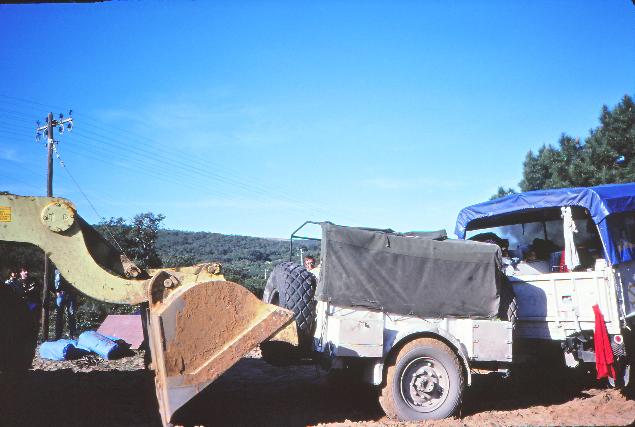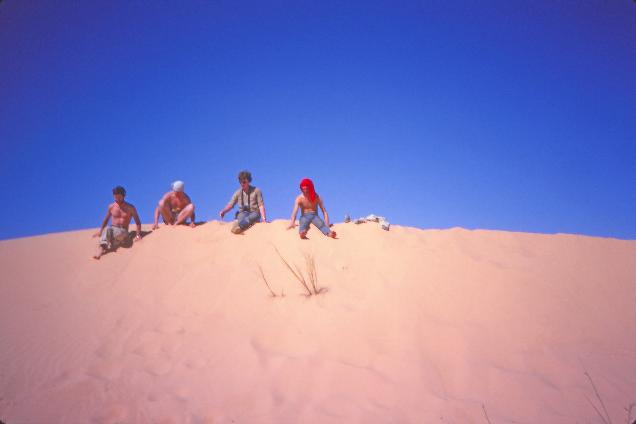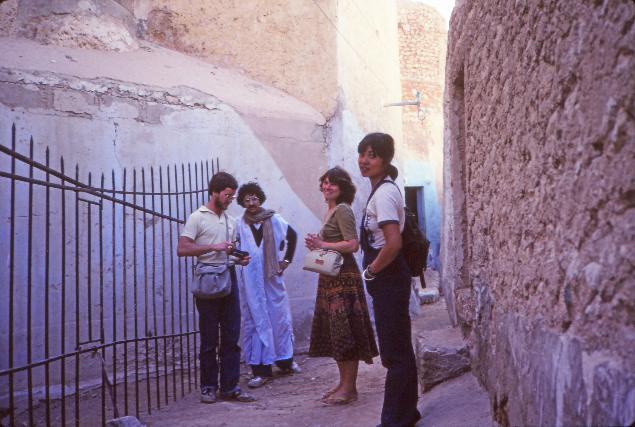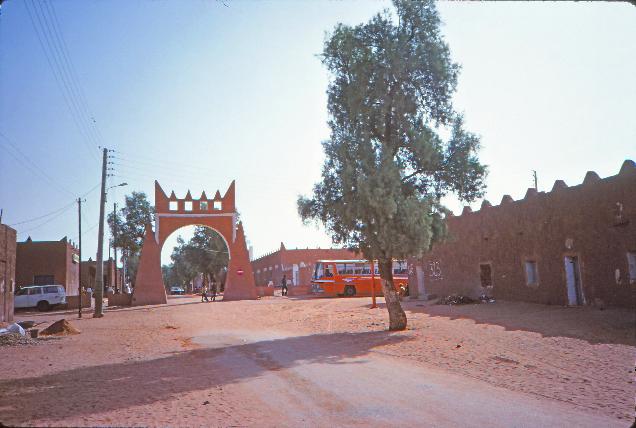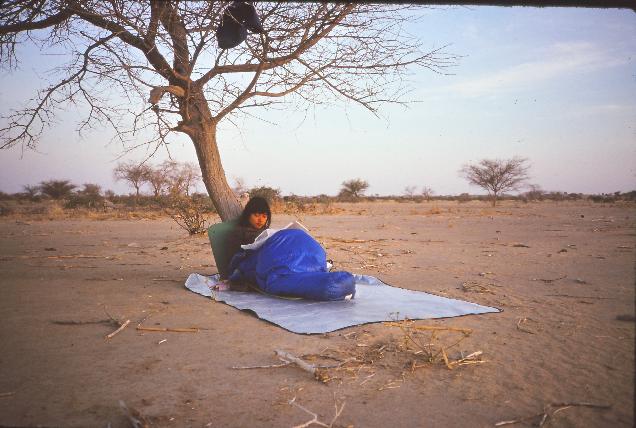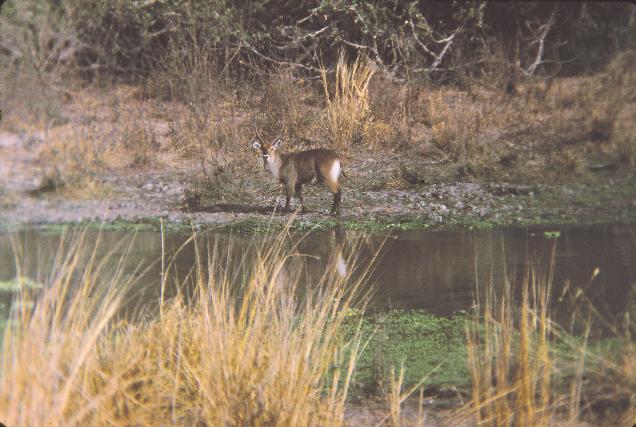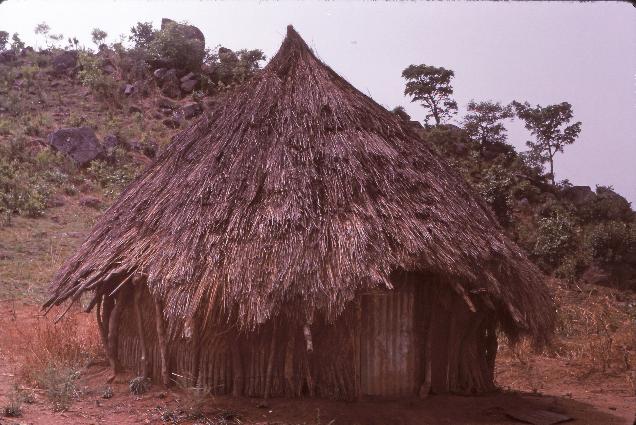All photographs on this page copyright © Peter A. Frazer 1980, 2012, all rights reserved
Trans Africa 1980
In 1980, at the age of 24, I made an epic journey of 15,000 kilometres across Europe, over the Sahara desert and through the Central African rain forest. I was one of a party of 18 travelling in a 20 year old ex-army 3 ton Bedford truck. Our journey was a remarkable one, often hard, frequently exhilarating, at times bizarre, sometimes breathtakingly spectacular, sometimes dangerous, and on one occasion, tragic.
Whilst undoubtedly the experience of a life time, my photographic slides have sat in a cupboard gathering dust for many years. Recently one of my fellow travellers, 'the other Pete', contacted me from Australia and asked me if I still had my photos. Eventually I got around to scanning them and here they are.
One of my fellow travellers, Brad Doney, wrote an account of the journey on his return to Kingston, Canada. With Brad's kind permission I am pleased to host Brad's article here. Brad Doney: African Odyssey
If you were a member of the party, please contact me. Some of us are in touch and it would be good if we could be together once again.
Hint: If you are having to scroll down to see the whole picture try making your browser window narrower or change the orientation of your device.
This page uses two different image resolutions. If your want to see the high resolution images make your window wider and refresh the page.
Hint: To bookmark a specific photo click on its header to get an anchor. Clicking on each photo will take you to the next.
Europe
1980 01 28 Oberau, Austria
We stopped at Calais for one night and a few days in Mons while visas were arranged. After a 30 hour drive we arrived in Oberau and found some relief from the cold in a hotel for the night.

1980 01 29 Palermo, Sicily
... and after a mad drive down the side of Italy and across Sicily we caught the weekly ferry from Palermo to Tunis with just minutes to spare.

Noth Africa
Sahara
1980 02 21
Route Number 1, straight across the Sahara desert. El-Golea 200 Km and on the other side Ain-Salah 200 Km. The middle of nowhere, a wilderness, the Sahara desert. To lie under the stars in the moonlight here makes one aware of the amazing expanse of the desert.

1980 02 20 Algerian Sahara
We frequently had to push the truck over soft sand. No wonder Ain Salah is called 'Ville de Sable'.

1980 02 26 middle of the Sahara
South of Tamanrasset the tar sealed road comes to an end. Which way was it?

1980 02 26 middle of the Sahara
For this Bedouin the only direction is up. Note the mirages on the sky line.

1980 02 29 northern Niger
We meet a lone Japanese cyclist. Again there are mirages all around the horizon.
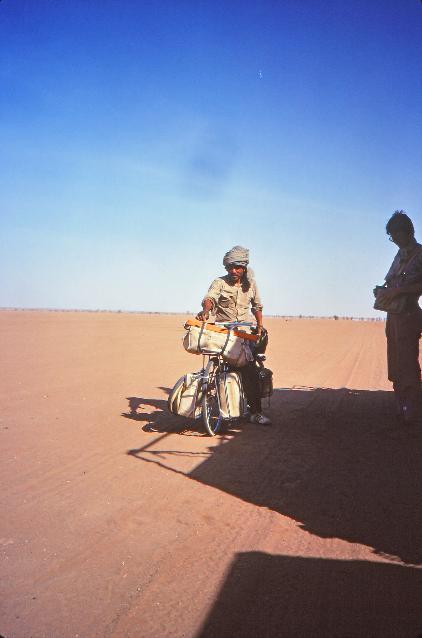
1980 02 29 Niger
Niger is one of the poorest countries in Africa yet this area has rich Uranium deposits.

1980 03 02 Agadez, Niger
Tea time at Agadez.
L to R: Rose, Colleen (hardly visible), Pete, Linda, Sue, Tina, Diane, Mike, Bruce, Jeff (under truck).

Sub-Saharan Africa
1980 03 06 Kano, northern Nigeria
Coca-Cola culture Kano. After so long in the desert the large city of Kano is something of a culture shock.

1980 03 15 Yankari game park near Bauchi, Nigeria
Camped on the veranda of a missionary school (closed for holiday).

1980 03 15 Wiki warm springs, Nigeria
Pure clear warm water flows out from under a cliff. Nuts and gourds drop from the shady trees in a gentle breeze. There is a huge dragon fly flitting around. A family of baboons sit drinking water and lazing around on the opposite bank.

1980 03 15 Wiki warm springs, Nigeria
A game of 'black against white' with the missionary's children and the locals. After our hard travels this place seems like Heaven.

1980 03 17 Yankari game park, Nigeria
Baboons chase us for food. They are slightly less body mass than a man so one can see them off to some extent, however their long sharp claws and huge fanged teeth command some respect.

1980 03 19 Guider, northern Cameroun
Cameroun seems altogether more cultured and relaxed than Nigeria, perhaps reflecting the different outcome of French colonial rule compared with British. The architecture is also different.

1980 03 19 Guider, northern Cameroun
The village pub has an electric fridge. There is no electricity in the village but who cares.
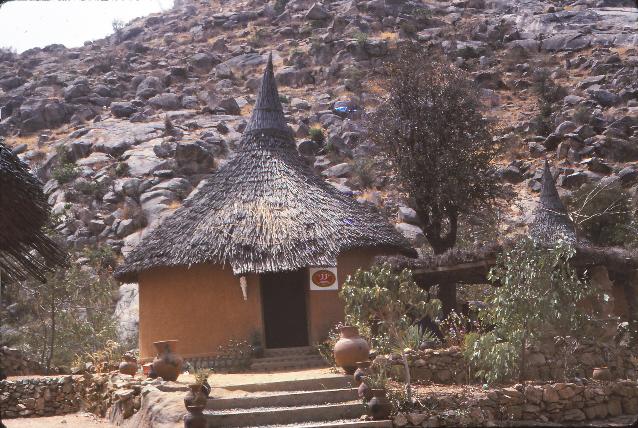
1980 03 20 Waza, northern Cameroun
This entire 'village' is a hotel. There are two rooms in each 'hut'. The restaurant and bar are at the top of the hill. Linda and I decided to walk up the opposite hill which proved to be higher than we expected.
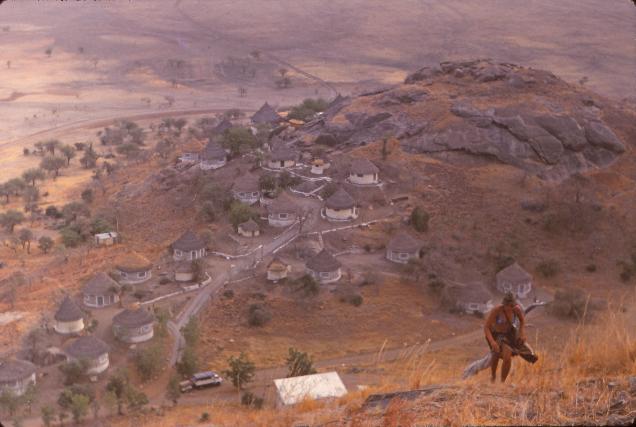
1980 03 30 Tinglin, Cameroun
Two men build a hut. One makes balls of soft mud and throws them up. The other catches them and slaps them on the wall moving backwards round the wall as he does so. It is much faster than brick laying.

1980 03 30 Tinglin, Cameroun
This is the village pub. These are people who mostly speak three languages and the young study maths, physics and chemistry amongst other subjects.

1980 03 31 near Garoua, Cameroun
Stuart poses in a fancy suit made by a local tailor. This is a cotton growing area.

1980 03 31 near Garoua, Cameroun
A bush fire rages past out camp. This was as close to it as I cared to get.

1980 04 04 Lac Tisson, near Ngaundére, Cameroun
A beautiful lake in the crater of an extinct volcano. Crickets and frogs can be heard croaking. Colourful dragonflies, ants up to an inch long and huge caterpillars.

African Rain Forest
1980 04 06 Baboua, Central African Republic
As usual, there is a change in architectural style on crossing the border. Here the huts are more often rectilinear. There are pigs. We are on the edge of the tropical rain forest.

1980 04 06 Bouar, Central African Republic
In addition to the colourful transport, there are colourful flowers on the trees.

1980 04 09 Bangui, Central African Republic
A modern hotel stands by the sandy beaches of the Oubangui river overlooking the green hills of Zaire (now Democratic Republic of Congo). Behind is a palace of the infamous dictator Colonel Bokassa. The natural beauty stands in stark contrast to the political turmoil left in the wake of the deposition of Bokassa. French marines are in evidence everywhere, amongst other armed factions. Helicopters cruise over the river. What an extraordinary place.

A French hitch hiker told us he had just had a 3 day lift with some United Nations ambassador. According to him, last year (1979) the French suggested to Bokassa that he was becoming a tyrant and that he ought to behave himself. Bokassa was having a spot of bother and threatened to call the Russians to his aid. This upset the United Nations so, while Bokassa was in Lybia, the French came in with paratroopers and the lot. They had a puppet president at the ready and installed him immediately, telling the people they were safe from Bokassa. At that point the local factions were fighting in the street with machetes. Bokassa's house was ransacked and priceless French cut glass was for sale in the streets.
1980 04 09 Bangui, Central African Republic
Bangui in some ways resembles a French Riviera town. There are beautiful coloured flowering trees.

1980 04 14 Bangui, Central African Republic
The influence of colonial Catholicism remains. There are foreign embassies with fine modern architecture. All the military wear different uniforms and senior officers ride 800 cc BMW motor bikes. The VIPs cruise around in black Mercedes with a motorbike in front and a car load of police behind. You've probably got to be here to see what an extraordinary place this is.

Behind the Palais de la Renaissance lies the Palais du President Valery Giscard d' Estang with a monument, fountains and entrance to the military zone.
1980 04 14 Bangui, Central African Republic
We were camped on open ground behind the hotels near the river, under Bokassa's old palace. There were several other groups of European travellers on the same site. As there was no diesel in town, we were there for nearly 4 weeks.

The African man sitting in our camp is Augustine, a hitch hiker from Upper Volta. He had attempted to travel through Chad where civil war had just broken out. He was thrown in jail for ten day then let out but had all his money taken and was given one hour to leave the country. That entailed running through streets full of dead bodies and swimming a river full of blood. Africa can be a heavy place at times.
1980 04 14 Bangui, Central African Republic
Mike and Stuart with some of the orphans who also lived on the camp site. One day they were trying to sell us an armadillo with a string tied round its tail.

1980 04 14 Bangui, Central African Republic
Mike was a professional dentist and freely offered his services to all in need. No anaesthetic though.

1980 04 14 Bangui, Central African Republic
Cynthia opted to leave our party and travel down the Oubangui and Congo rivers by raft to Brazzaville. Matt suffered acute appendicitis, had it removed locally and was flown back to England. We picked up two English hitch hikers to make up our numbers.

1980 05 03 Central African Republic
On the drive east through the rain forest we encountered very difficult roads but beautiful scenery.

1980 05 06 near Bambari, Central African Republic
An albino African boy and his friend play an improvised guitar.
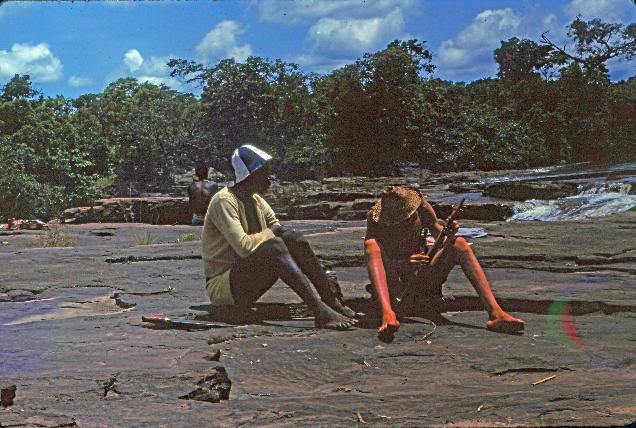
1980 05 08 Central African Republic
Even in this remotest of places there is a bus service. Note the live goat tethered to the roof rack.

1980 05 09 Rafia, Central African Republic
The tranquillity of beautiful gardens at a Christian mission. The English mission has radio. You've no idea how bizarre it is to hear the chimes of Big Ben and the BBC news here in the heart of the Central African rain forest. We are 150 Km from either of the two nearest major towns.
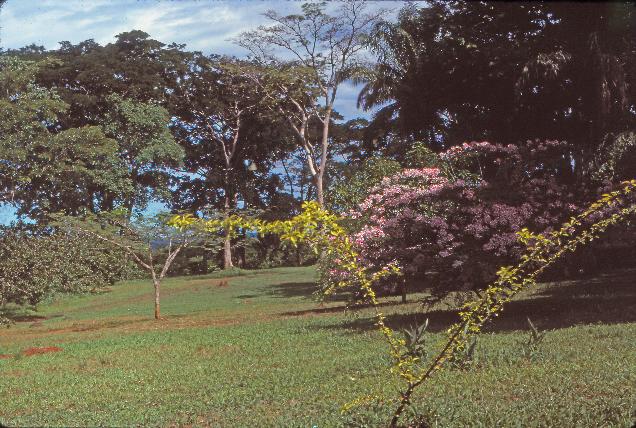
1980 05 14 near Zemio, Central African Republic
After a lunch break at a river crossing I decided to walk on up the road alone. I was surprised to encounter two men of Caucasian appearance wearing loin cloths and carrying spears. As I was walking alone in the middle of the African rain forest they were equally surprised to see me. "Bonjour" I ventured, being in a French speaking country. Their reply was in eloquent and cultured French. One French, the other from Madagascar, they had been travelling on foot for 5 years, working the land and hunting for food. They were heading for Paris.

1980 05 14 near Zemio, Central African Republic
Not all of the bridges are in good condition. There are graves near to some of them and a good many I prefer to walk across. Colleen keeps a careful watch as Jeff drives.

1980 05 14 near Zemio, Central African Republic
The 'ferry' consists of three small leaking barges and timbers just wide enough to drive the truck on. There are no adequate boarding ramps so we have to stand in the river and hold the ferry whilst driving the truck on. An aerial safety rope stops the raft from being carried downstream in the fast flowing water. We have to punt the raft across the river.

1980 05 15 near Obo, Central African Republic
Brad near some fish traps. The local people are very dependent on the rivers.

1980 05 15
Another 'ferry' crossing. Stuart and Brad punt 8 tons of truck and trailer across a fast flowing river.

Oh no! The rest of my films got stolen.
Missing are my remaining photos of Central African Republic, Southern Sudan, Uganda and some of Kenya.
The remaining photos below were taken at a game park in Kenya.
Kenya Game Park
All photographs on this page copyright © Peter A. Frazer 1980, 2012, all rights reserved















